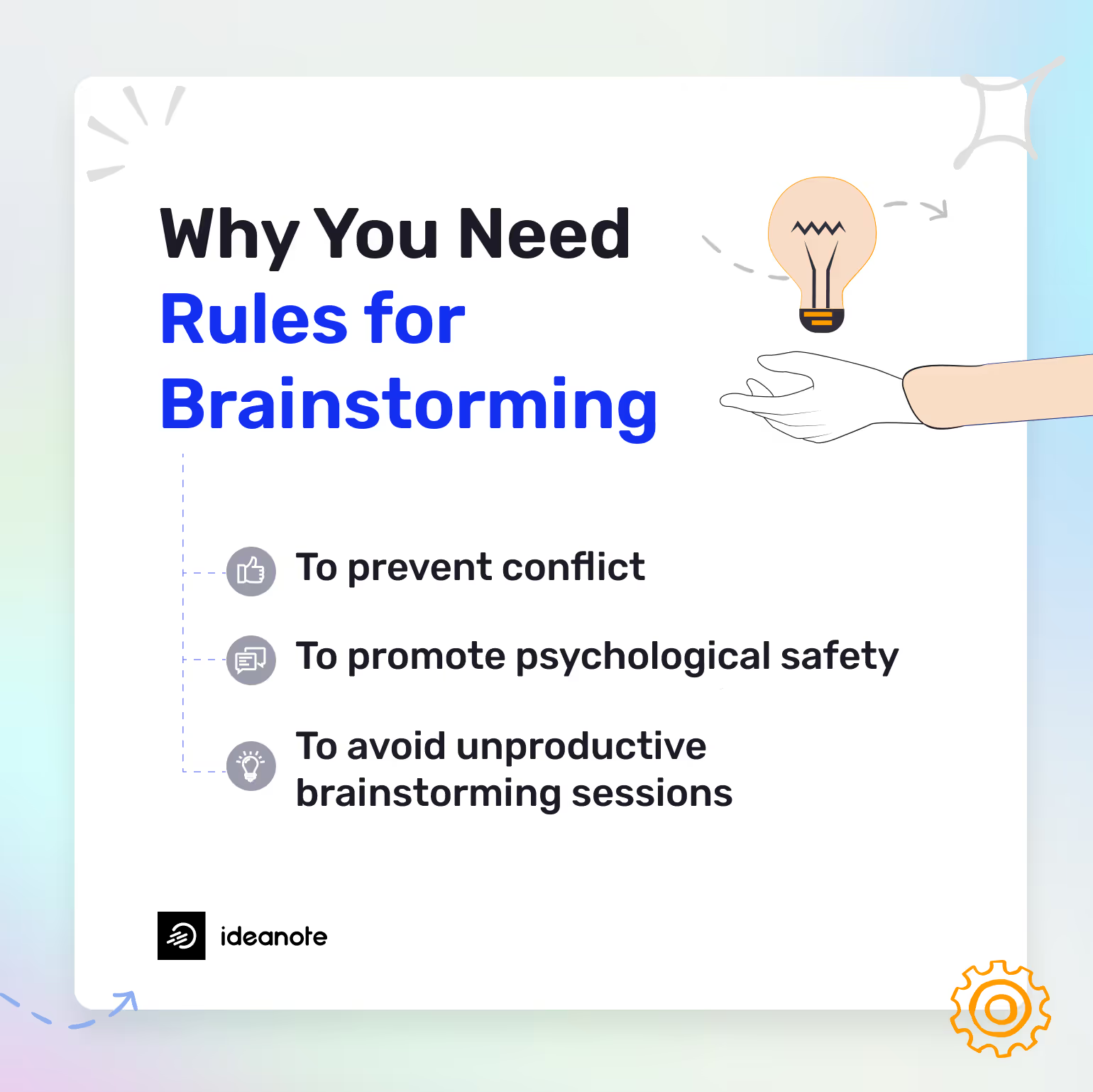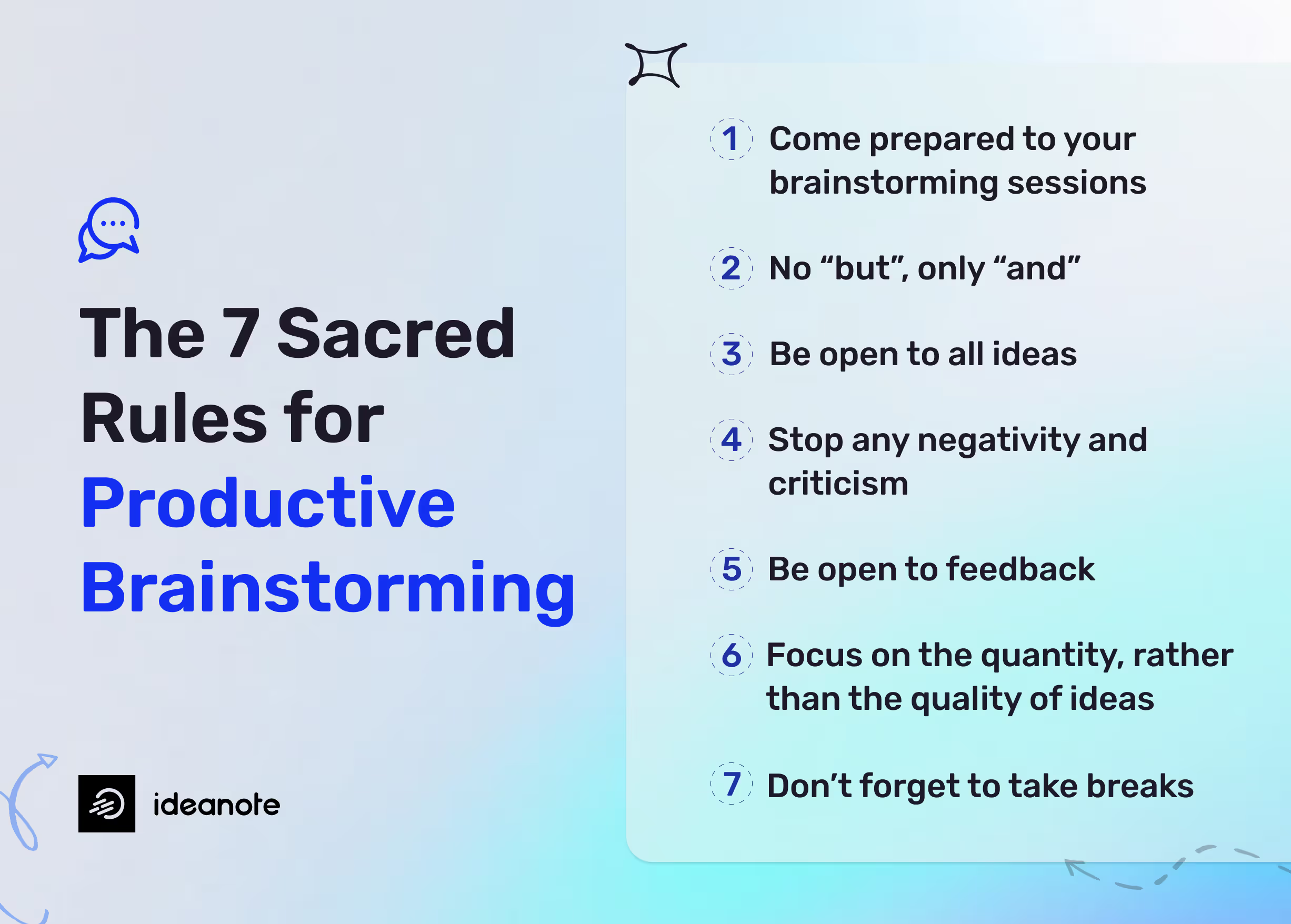
7 Essential Ground Rules For Productive Brainstorming Sessions
Picture this: a room full of bright minds, brimming with potential, yet paralyzed by unspoken norms, awkward silences, or an avalanche of half-baked ideas that go nowhere. Brainstorming, in theory, should be the birthplace of innovation—but too often, it’s just a breeding ground for frustration. What if the problem isn’t a lack of creativity but a lack of structure? This article unveils seven surprisingly simple rules that might just transform your next session from chaos to clarity.
The classic way of conducting brainstorming meetings where you’d just throw around ideas like ping pong balls around the room doesn’t work in a world where distractions are at every corner.
But how do you effectively prevent your team members from mind wandering, daydreaming, and getting distracted by a million things during a brainstorming session?
There are essential brainstorming rules that can help get your team members out of a creative rut and get their ideas flowing. These rules are meant to be followed by everyone in a brainstorming meeting.
Send this guide to everyone on your team before your next brainstorming session.
Why You Need Rules for Brainstorming
With a set of rules, you can create an environment conducive to creativity, teamwork, and coming up with ideas quickly.
Here are some reasons why setting rules for brainstorming can help you make your sessions more organized and smooth.

To Prevent Conflict
Workplace conflicts are something we cannot avoid. They happen, even if unintentionally.
But with clear rules in place during brainstorming sessions, everyone knows how to share ideas respectfully and listen to others.
This reduces the chances of disagreements and keeps the focus on productive idea generation.
To Promote Psychological Safety
In its two-year study with 280 teams, Google found that the main element in innovative teams was psychological safety.
In other words, if you don’t feel safe to express your ideas and opinions during a brainstorming meeting, you’ll hold yourself back, fearing to be laughed at or having your ideas instantly shut down.
To Not Lose Money with Unproductive Brainstorming Sessions
Unproductive brainstorming sessions make you lose time and money. In the same study, Google found that structure is one of the five key elements of effective teams.
By establishing a set of brainstorming meeting rules, you can provide your team with the structure they need to keep the session organized and productive.
The Sacred Rules for Productive Brainstorming
Here are 7 sacred rules for productive brainstorming sessions to share with your team.

1. Come Prepared for Your Brainstorming Sessions
You might believe that free thinking means no preparation, but that couldn't be further from the truth. A successful brainstorming session requires preparation.
Set goals not just for the topic but for everyone involved. Share these goals beforehand, giving everyone time to prepare.
2. No “But,” Only “And”
To foster a comfortable environment, replace the "buts" with "ands," following the "yes and" technique from improv theater. When someone presents an idea, use "yes and" to enhance it instead of "yes but."
The principle of this approach is agreeing with an idea and adding something to it. You propose an idea, and then someone else agrees with it with a "yes" and adds something creative using the word "and." The next person agrees and adds another creative "and" to that idea.
This technique creates a positive space, encouraging more idea sharing, compared to a critical atmosphere with "yes buts."
Also read: Help Your Team Brainstorm Bold & Creative Ideas
3. Be Open to All Ideas
Welcome all ideas - even the ones that seem bad or too far-fetched. Starting with bad ideas gets creativity flowing and paves the way for good ones to emerge.
Also, remember that the ideas you come up with during a brainstorming session are just rough drafts. There will be time to sort them, evaluate them, and refine them at the later stages of the idea management process. For now, focus on gathering ideas.
Also read: The 10 Best Brainstorming Tools for Innovative Companies
4. Keep a Positive Environment
A meta-analysis of 800 teams revealed that group brainstorming can sometimes be much more unproductive than individual sessions, mainly because many participants hold back on their ideas due to social anxiety, social loafing, and regression to the mean.
That’s why in brainstorming, the most important rules are to refrain from negativity and judgment.
📌 Don’t instantly criticize other people’s ideas
Some team members may not want to contribute their ideas out of fear of being criticized. To prevent this, create an environment where all ideas are welcomed - even those seemingly bad or crazy ones.
📌 Respect each other’s ideas and opinions
When people feel that their ideas aren't considered or heard, they’ll naturally retrieve into their shells and won’t feel inspired to contribute. Creating an environment of mutual respect where everyone's input is appreciated is vital to effective brainstorming.
📌 Support open dialogue
Criticism should be avoided during brainstorming sessions at all costs. However, everyone should be encouraged to share their opinions and discuss ideas.
To encourage an accepting atmosphere, make a list of phrases to avoid that could stifle creativity, such as:
- "We tried it before."
- "It's a good idea, but..."
- "That's not in our budget."
- "It's too risky."
- "That won't work."
You can also try the A&A rule: instead of judging, encourage your team members to focus on Adding or suggesting Alternatives to ideas.
Also read: Reverse Brainstorming: Definition, Examples & Techniques
5. Be Open to Feedback
➡️ Feedback isn’t criticism
Feedback is the key to improvement. That’s why you should encourage participants to vocalize their opinions about other people’s ideas during a brainstorming meeting. But remember that feedback isn’t criticism. Criticism talks about problems without solutions. Feedback acknowledges problems and helps find solutions together.
➡️ Build upon other people’s ideas
One way to spark productivity during your brainstorming session and encourage everyone to participate and share ideas is by using collaborative exercises, such as the “yes, and” method or the “round-robin” exercise.
These brainstorming techniques are meant to encourage participants to build upon other people’s ideas. This takes off the pressure to have complete ideas and promotes teamwork within the brainstorming group.
6. Focus on the Quantity Rather than the Quality of Ideas
Brainstorming sessions are a time of creativity, innovation, and coming up with crazy ideas that can lead to groundbreaking solutions and fresh perspectives. The more ideas you generate, the higher the chances of finding that one groundbreaking idea.
That’s why you shouldn’t focus on refining ideas during your brainstorming meeting but rather gathering as many as you can. You’ll evaluate and improve them later.
7. Don’t Forget to Take Breaks
Being chained to your desk or your computer isn’t as productive as you may think. When it comes to creativity, our brain needs breaks to disengage from one idea and create a space for a new one. Neuroscientific studies have proven that taking regular breaks is actually a good thing for our creativity.
So, make sure to schedule a break time in your brainstorming meetings.
Also read: How to Run Your First Brainstorming Session [Guide]
Next up to Read:
Turn Ideas into Action with Ideanote Today!




